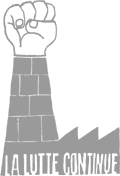Latitude scale. Or, paleos may know some stuff after all
Every month I spend beyond ridiculous amounts of time drawing maps for the WW cruising guides. Along the neatlines (sides) of each map are black and white bars. Each bar represents one mile. It looks like this.

I do it like that because Old Charts do it like that too; because there’s a deliberately slightly retro feel to the WW maps (they’re essentially strip maps, like cruising guides used to have); and because I think it’s a great signifier of “we care about cartography” rather than “we have just thrown an OS map at our designer and told him to trace it, though not too obviously”.
Old Charts do it for a proper reason.
Roughly every two months someone complains that either a) the scale on OpenStreetMap is wrong or b) that OpenStreetMap doesn’t have a scale. (To be precise, a) happens, then the scale gets removed to stop the whingeing, then two months later b) happens.) You can read typical threads here and here but, in brief, the reason is because the scale isn’t consistent across latitudes, and that’s quite significant when you’re zoomed out a lot.
A bunch of us were talking about that this weekend, which is what just made me remember this.
On Old Charts, one bar represents one minute of latitude (or longitude). So the length of the latitude bars actually differs across the map.

The above is from a 3Mb university course presentation which blethers on about it for a while.
It’s an excellent solution. I wouldn’t imagine there’s any likelihood of OpenLayers et al adding it any time soon. But doesn’t it look great?
Permalink | Comments (4) | Category: cartography |


Since OpenLayers now has a lat/lon grid control, it shouldn’t be too hard to add.
It’s a great idea.
Good idea: but give human-understandable units (oddly enough I still don’t reckon distances in degrees of latitude and longitude!)
The black/white dashes look a little noisy to my Tufte-influenced eyes: chequers tend to be busy elements which detract from content, particularly high-contrast ones. Not sure what else you could use though :/
Er, reading TFA *properly* – yes, you use miles. Ignore me on that.
This is far from being a workable solution, but maybe as “proof of concept” – http://www.reedhome.org.uk/Documents/osmembedscale.html?scale=yes. Comments welcome, but please bear in mind that I’m still trying to get my head round Javascript and OpenLayers.